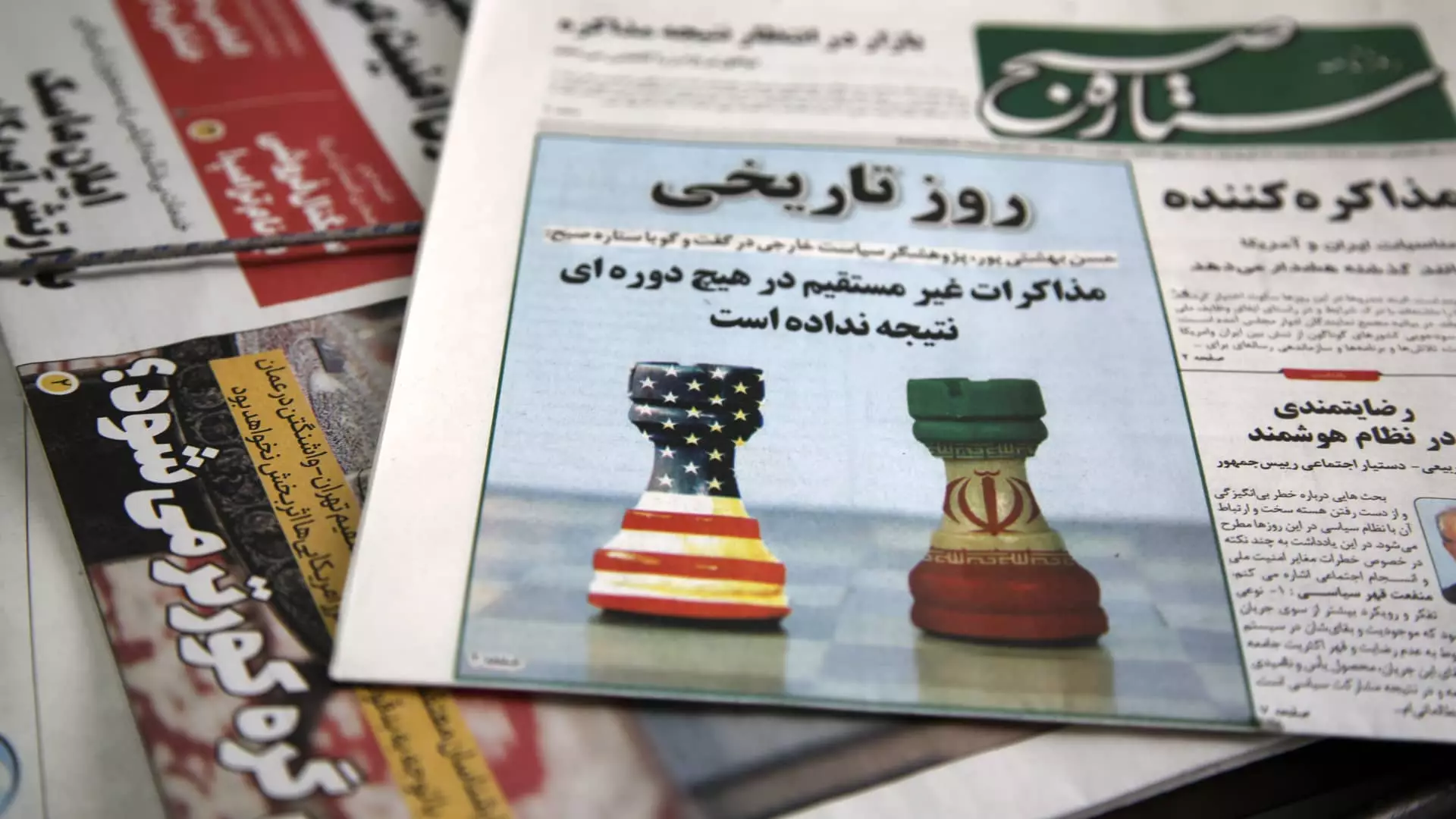The specter of war looms large over the latest negotiations between Iran and the United States as they approach yet another round of talks to address Tehran’s nuclear ambitions. The backdrop is laden with decades of entrenched animosity, rising tensions, and threats that have oscillated from diplomatic to militaristic. The recent dialogue in Rome, mediated by Oman, underscores a precarious effort to navigate through a labyrinth of mutual distrust, punctuated by President Donald Trump’s bald threats of military action should diplomatic efforts falter. Such a transition from soft negotiations to a hard military stance highlights an alarming volatility as the stakes rise higher with each passing moment.
Negotiations, akin to a dangerous dance, require a rhythm of mutual understanding and respect, both of which have been scant in the past two decades. As diplomatic representatives like Iran’s Foreign Minister Abbas Araqchi and Trump’s envoy Steve Witkoff come face to face—not in direct dialogue, but mediated through Oman—each gesture and comment is fraught with implications. In an era where every word can be weaponized, both sides must tread carefully to prevent a misstep that could spiral into catastrophic consequences.
Decoding Iran’s Ambitions
Despite Iran’s assurances that its nuclear program is peaceful—a narrative they have pushed since the inception of their enrichment activities—their actions often speak louder than words. The repeated violations of the 2015 nuclear agreement, particularly concerning uranium enrichment, raise eyebrows and provoke skepticism. For many observers, Tehran’s insistence on not dismantling its centrifuges or capping its uranium stockpile directly contradicts their professed commitment to peaceful energy production. This duality establishes a blockade against forging trust, as each concession is met with skepticism by the opposing party.
Those advocating for tougher measures may point to Iran’s steadfast resolve to retain its nuclear capabilities as evidence of a wider agenda than mere energy. The stark realities of the situation show that each side has its red lines, with Iran’s refusal to discuss missile capabilities or dismantle existing infrastructure illuminating its determination to remain a power broker in the region. With Supreme Leader Ayatollah Ali Khamenei striking a cautious tone—neither “overly optimistic nor pessimistic”—the Iranian position reflects a deep-rooted wariness grounded in a history of betrayal, particularly in light of Trump’s previous withdrawal from the nuclear deal.
The American Strategy: Fear and Obligation
From the United States’ end, the narrative revolves around national accountability, and the commitment to prevent Iran from achieving a nuclear weapon is paramount. The renewed “maximum pressure” strategy post-Trump signifies a willingness to escalate tensions should diplomacy not yield fruit. This strategy reflects deeper moral convictions tied to American exceptionalism—an obligation, some might argue, to protect not only its citizens but allied nations who fear a nuclear-armed Iran.
However, the ideological rigidity characterizing America’s approach could backfire if not tempered with pragmatism. Trump’s mixed messages about wanting Iran to be “great and prosperous” while simultaneously threatening military intervention exemplify a troubling disconnect. How does one foster prosperity through fear? Such contradictions sow confusion and only amplify Iran’s defensive dispositions, giving rise to a cycle of retaliatory posturing rather than constructive dialogue.
The Path Forward: A Hurdle Race
With both parties expressing an indeterminate commitment to diplomacy, the expectation for a seamless communication channel seems exceedingly optimistic. As they prepare for continued negotiations, it is crucial for both Iran and the United States to recalibrate their approaches; the pathway to peace requires sincerity and commitment to mutual respect. Any perceived insincerity could quickly devolve into a blame game, further complicating already fraught exchanges.
Riding on the shoulders of past grievances and turbulent history, these forthcoming discussions hold the potential to either yield a framework that stabilizes the region or amplify warfare narratives rooted in fear and distrust. The entangled dynamics characterize an age-old struggle between maintaining sovereignty and the desire (or need) to assert one’s will on the international stage. Ultimately, the stakes are not merely political; they encompass the survival and future of millions, precariously balanced on the outcome of these negotiations. The time has come for substantive dialogue and mutual understanding, not merely empty rhetoric parading as diplomacy.

Leave a Reply